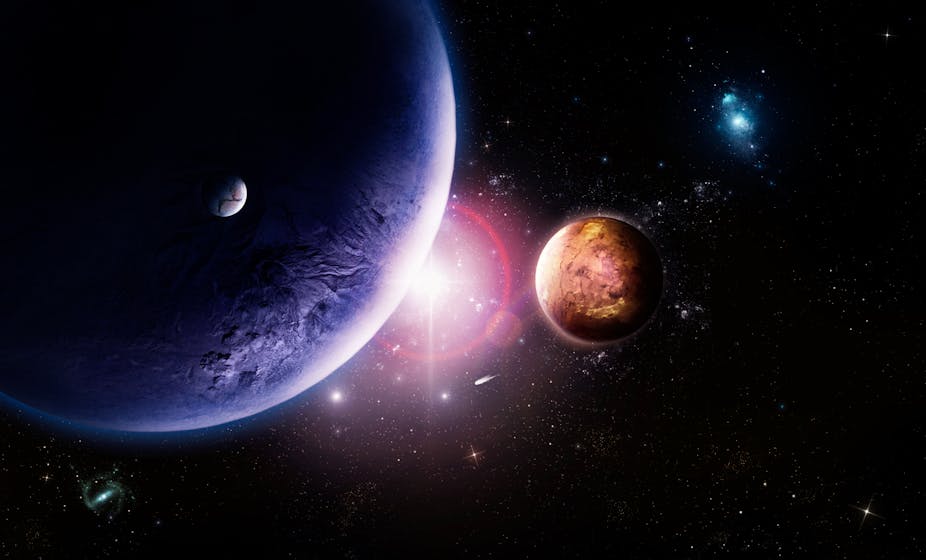All human societies construct and teach creation myths or origin stories. These are large, extraordinarily powerful, but often ramshackle narratives that try and tell the story of how everything came to be.
They offer maps that can help us to place ourselves, our families and our communities and to navigate our world. By positioning us within something much greater than ourselves, origin stories provide us with intellectual and ethical anchors.
This is why all spiritual traditions have these big narratives embedded within them. They’re at the heart of both small-scale communities with oral traditions and the theologies of the major institutionalised religions.
Traditionally origin stories were also central to education, because they gave shape and meaning to knowledge. But, in modern secular educational systems, we do not teach an origin story. Indeed we have become so used to its absence that it no longer seems strange to teach and learn without one.
Of course, you can learn about the origin stories of other societies or about the earlier origin stories of our own cultural traditions, though these seem to mesh less and less well with today’s world. In history courses you can also learn the tribal origin stories of individual nations, but these work only for particular communities.
What we lack is a universal origin story that works in today’s globalised societies. As a result, educators teach and students learn without the large organising structures and the sense of orientation that an origin story can provide.
Without those structures, knowledge itself seems fragmented, and all too often, students leave school and university with the sense of meaningless or drift that French sociologist Emile Durkheim described as “anomie”.
The failure to teach a modern origin story is curious because such a story lurks at the heart of modern science, waiting to be teased out.
The modern origin story is large and ramshackle, with many different components, bits of nuclear physics, some cosmology, stories about the power and creativity of DNA, or the astonishing diversity of evolved organisms, or the strange history of our own remarkable species.

But it’s actually possible to put these bits and pieces together to tell a coherent, rigorous and evidence-based story that is based on the best of modern scientific scholarship. “Big History”, a course I’ve been teaching for more than twenty years, tries to do just that; it tells the story of the universe and our place in it using the best of modern scholarship in the sciences and humanities.
It begins with the big bang, 13.7 billion years ago. It tells how stars and planets were formed, and how life emerged and evolved on our earth. The final parts tell the spectacular story of our own strange and dangerous species.
Big History brings together the humanities and sciences into a coherent account of how things have come to be as they are.
When we first began teaching Big History, we soon discovered that our students were not content with a story that ended today. They also wanted to ask where the story was going. Will growth continue? Will there be a collapse as we undermine the ecological props of modern human society? Will we develop a more sustainable relationship to our environment?
So, our Big History course also takes us into the future and asks: what do we need to do?
It turns out that the modern origin story, like all others, is full of ethical significance and raises deep questions about how we should conduct ourselves.
Today, there are perhaps 50 Big History courses in universities and colleges. Most are taught in the USA, but there are also courses in Australia, in Korea, in the Netherlands and Russia. In 2010 an International Big History Association was founded; it held its first conference in August 2012.
For years, I believed that Big History courses should also be taught in High Schools, but I had no idea where to begin. In 2008, Bill Gates came across the idea of Big History and felt such courses should be taught in high schools.
He contacted me and together we have set up the Big History Project, which is developing a free online syllabus in Big History for high school students. In 2013, the online syllabus will be made freely available to schools and independent learners throughout the world.
Slowly, it seems, we are discovering our own modern origin story, the story that oozes out of today’s global society of 7 billion people. This will be the first 21st century origin story that links all of humanity.
I believe, for that reason, it will provide a powerful unifying force in a world in which global collaboration is going to become more and more vital. But perhaps more importantly, I hope it will help give students a sense of where they fit in the bigger picture.

